Albert Paley's Steel Entry Gates
Introduction
Text-to-speech Audio
The large renovated house at the corner of 26th and I Streets features forged, fabricated, and painted steel entrance and vehicular gates created by Albert Paley in 1981. The companion gates express forms of burned metal and rough forgings. He shows the possibilities of Blacksmithing with the vertical and low horizontal pieces imprinted with pattern and the large circular shape.
Paley was a successful jeweler when he entered the Smithsonian's Renwick Gallery in Washington, D.C.'s national competition in 1974 to design decorative doors for its shop. Winning the competition changed the focus of his work and changed Paley's career. His "Portal Gates" made of brass, steel, copper and bronze, instantly became an icon for the museum and led to numerous commissions, propelling his practice toward monumental architectural ironwork. Paley is probably the best-known for his use of iron as material for his large complex sculptures, furniture, and jewelry.
Images
The sculptured gates secure the car park (left) and the entry area (right) of the renovated house
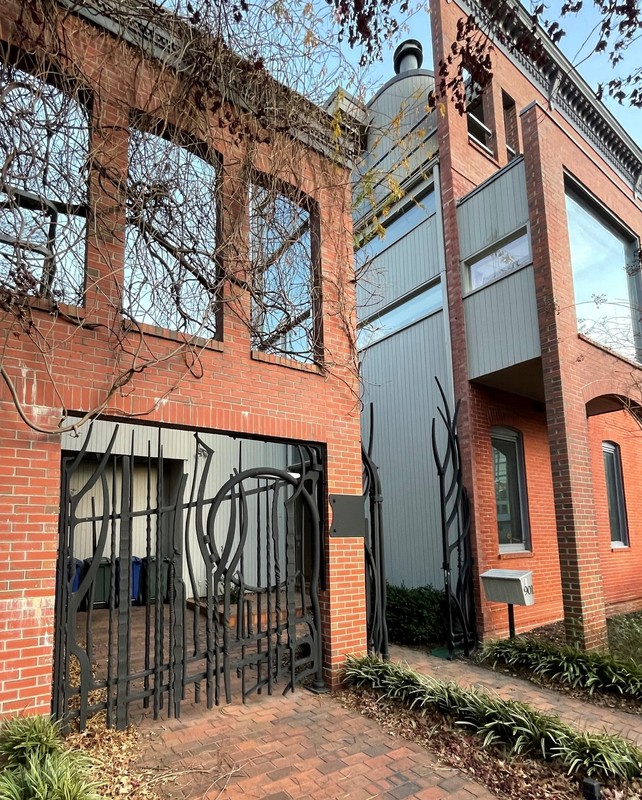
Variations in details of the vertical supports add interest and complexity to the art
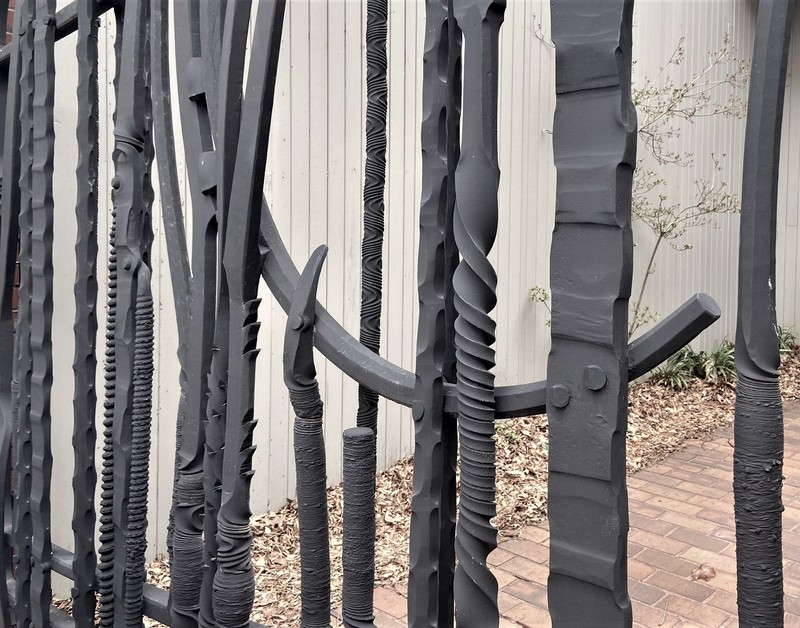
The companion entry gate shares similar design elements as the garage gate
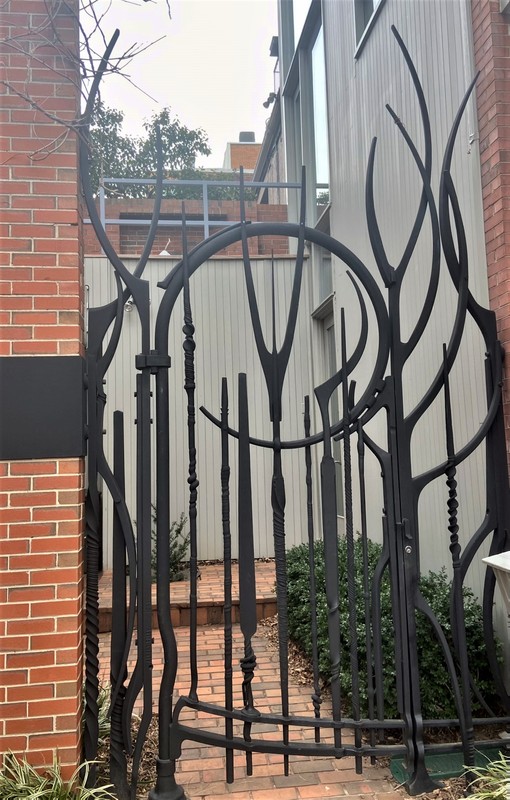
Paley's "Portal Gates" at the nearby Renwick Gallery
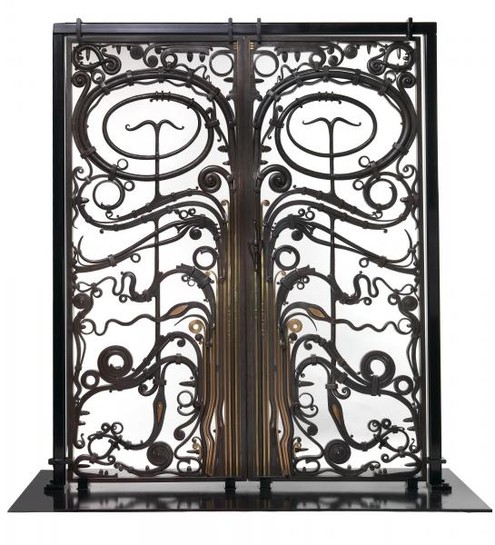
The 24-foot tall sculpture in Washington, D.C. is stamped with a poem by DC Poet Laureate Delores Kendrick
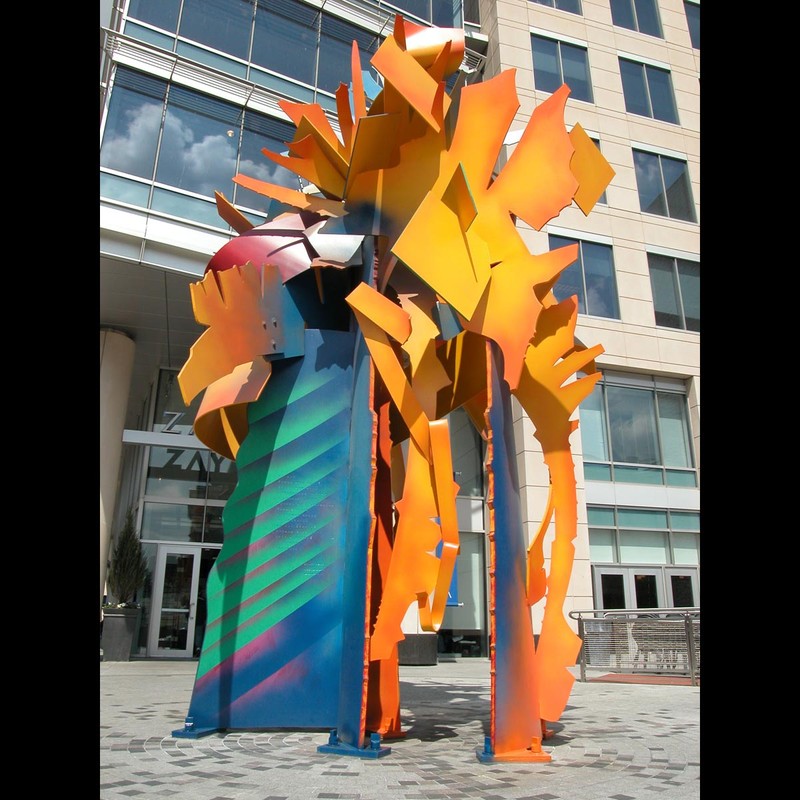
Darn hot -- Paley at work forging metal
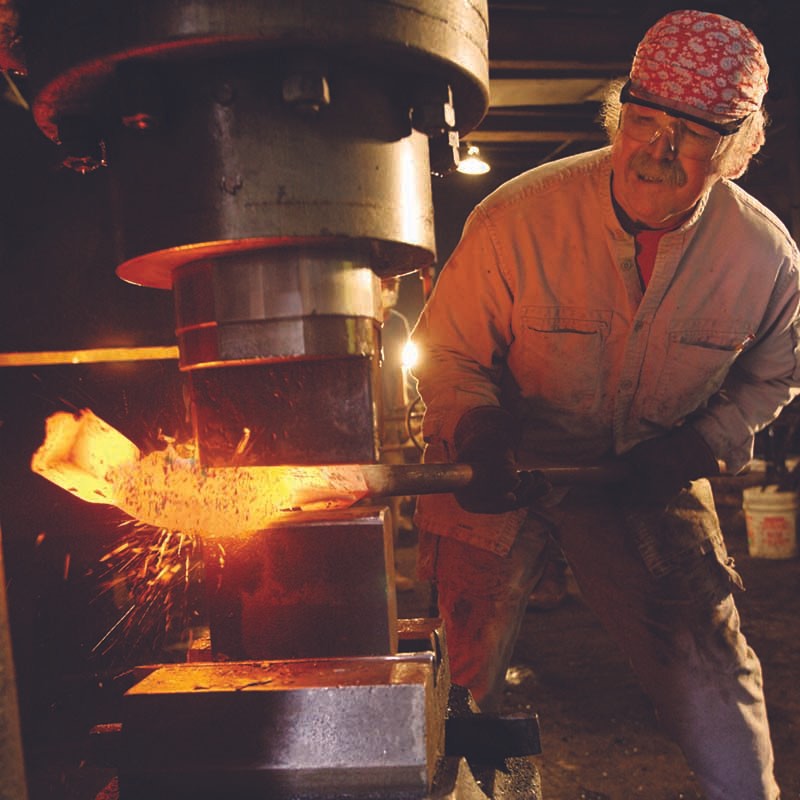
Backstory and Context
Text-to-speech Audio
Albert Paley grew up in Philadelphia, where he was born in 1944. As a boy he built model airplanes and drew a great deal. As a young man he rebuilt automobile engines and raced cars. He got a scholarship to the Tyler School of Art at Temple University. Paley went on to get a Master's Degree from Temple. He taught at the School for American Craftsmen of Rochester Institute of Technology and at New York State University College at Brockport. Paley didn't begin to work in iron until 1970. He has over 50 site specific works worldwide. His metalwork pays homage to European art nouveau and American abstract expressionism.
The 'Portal Gates' at the Renwick Gallery dramatically changed the course of his career. In an article from the Washington Post in 1977 about his work at the gallery, Paley said, "I don't draw things before I make them. If I could draw it just the way I wanted it to be, I wouldn't have to go to all that heavy work - which I don't enjoy. I have to work it all through, as I go. I don't actually care very much about making an object - the objects are just what are left behind, the visual record of what I was thinking." His comments offer a glimpse of his creative process.
The gates adorn the three-story red brick corner building (901 26th St.), which was built in 1878 as a house and store. In 1914, it was a saloon operated by Robert Stauber. But by 1923 - after Prohibition took effect - the building housed the Universal Holiness Church. It became a private residence and was renovated - and the gates added - in 1981.
Cite This Entry
FBA History Project, . "Albert Paley's Steel Entry Gates." Clio: Your Guide to History. February 14, 2022. Accessed April 27, 2025. https://theclio.com/tour/2116/7
Sources
Paley website (see link below)
Smithsonian American Art Museum website (see link below)
Leone/Vogt, 2021
Vogt/Leone, 2021
Leone/Vogt, 2022
Smithsonian Art Museum website
Paley website
Paley website

